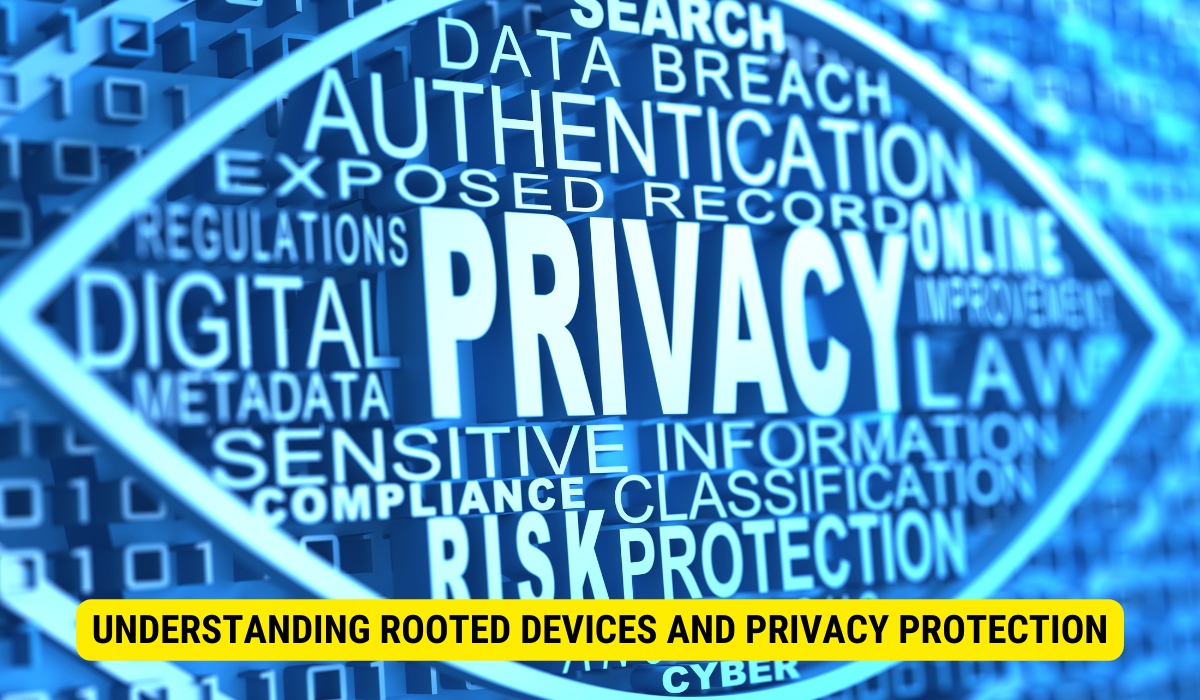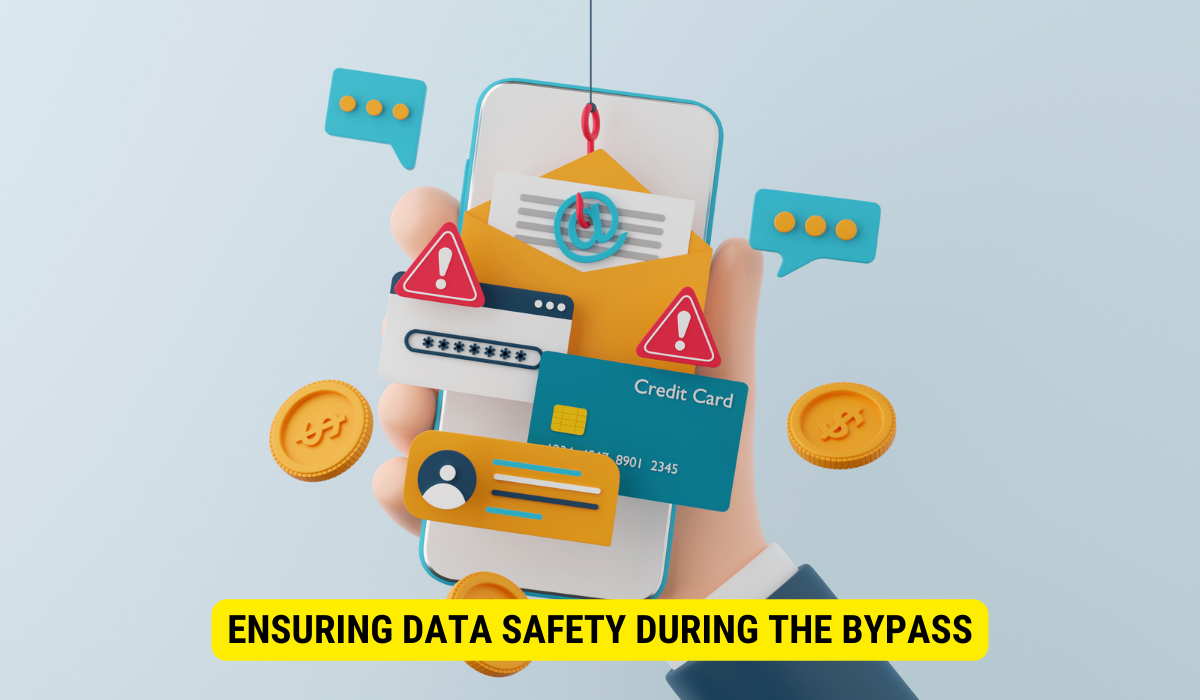To bypass privacy protection on a rooted device without losing data, users should ensure they back up all vital information, gather the necessary tools and software, enable USB debugging, and follow specific steps provided by the bypass tool. Advanced techniques may be required in some cases. After bypassing, data should be restored, and regular device check-ups are recommended.
Rooting your device can give you unparalleled control and customization options. However, it also comes with certain risks, especially regarding privacy protection. Privacy protection is essential for safeguarding your personal information and ensuring your data remains secure. But what if you bypass privacy protection on a rooted device without losing valuable data? I will guide you through the step-by-step process to help you achieve just that.
Understanding Rooted Devices and Privacy Protection

Before we dive into the bypassing process, let’s first understand what a rooted device is and the role privacy protection plays in such devices.
On smartphones and tablets, a rooted device provides access that can be compared to having complete control. This access grants you administrative privileges to the operating system, enabling you to adjust system files and settings that are typically off-limits. Consequently, you can install custom ROMs, uninstall unnecessary pre-installed apps, and fine-tune your device’s performance to your liking.
But with great power comes great responsibility, and that’s where privacy protection comes into play. While rooting your device opens up a world of possibilities, it also exposes you to potential risks. Privacy protection on rooted devices ensures that certain apps and processes cannot access sensitive data without your explicit permission. It protects against potential privacy breaches and unauthorized access to your personal information.
What is a Rooted Device?
A rooted device is essentially an ” unlocked ” device that allows you, the user, full control over the operating system. By gaining root access, you become the superuser, with the ability to change the core files and settings of the device.
Rooting your device can be compared to jailbreaking an iPhone. It removes the limitations the manufacturer imposes and opens up a whole new world of possibilities. You can modify your device to your heart’s content, installing apps that require root access, tweaking system settings, and even overclocking your device’s processor for better performance.
However, it’s important to note that rooting your device also comes with certain risks. You also expose your device to potential security vulnerabilities by gaining administrative access. Malicious apps or processes can take advantage of this elevated privilege to gain unauthorized access to your personal information or even control your device without your knowledge.
The Role of Privacy Protection in Rooted Devices
Privacy protection on rooted devices is crucial in securing your personal information. It acts as a gatekeeper, allowing you to control which apps and processes can access sensitive data.
One of the key features of privacy protection is the ability to grant or deny permissions on a per-app basis. When an app requests access to your contacts, location, or other sensitive information, privacy protection prompts you to allow or deny the request. This gives you full control over which apps can access your data, ensuring that only trusted apps can access sensitive information.
Privacy protection also includes features like app sandboxing, which isolates apps from one another and prevents them from accessing each other’s data. This adds a layer of security, reducing the risk of data leakage or unauthorized access.
Furthermore, privacy protection on rooted devices often includes features like ad-blocking and anti-tracking. These features help protect your privacy by blocking intrusive ads and preventing websites from tracking your online activities.
In conclusion, while rooting your device can give you unprecedented control and customization options, it’s important to be aware of the possible risks involved. Privacy protection on rooted devices is a safeguard, ensuring that your personal information remains secure and that you have full control over which apps and processes can access sensitive data.
Preparing Your Device for the Bypass
Before attempting to bypass privacy protection on your rooted device, it is crucial to take a few protective steps to ensure the safety of your data.
When bypassing privacy protection on a rooted device, it is essential to approach the process cautiously. By taking the necessary precautions, you can minimize the danger of data loss and ensure a smooth bypass experience.
Backing Up Your Data

The first and most important step is to create a comprehensive backup of all your important data. This includes contacts, messages, photos, videos, and other files you cannot afford to lose. Losing valuable data can be a devastating experience, so it is crucial to back up your data before proceeding with the bypass process.
There are several methods you can use to back up your data. One option is to use third-party backup apps that provide a user-friendly interface and permit you to select specific files or categories to back up. These apps often offer cloud storage options, ensuring your data is securely stored off-site.
Another option is to utilize the built-in backup feature in your device settings. Many devices offer this functionality, allowing you to create a data backup directly on your device or an external storage device such as an SD card or USB drive. This method is convenient and straightforward, eliminating the need to install additional apps.
Necessary Tools and Software
Next, gather all the tools and software required for the bypass process. This step is vital to guarantee a successful bypass and avoid potential complications.
The specific tools and software you need may vary depending on your device model and the bypass method you plan to use. In general, you will need a computer with a stable internet connection, USB cables to connect your device to the computer, and software applications tailored to your device model.
When downloading the required tools and software, it is essential to exercise caution and only obtain them from reputable sources. This will help minimize the risk of downloading malware or compromising the security of your device.
Additionally, it is advisable to research and read user reviews about the tools and software you plan to use. This will give you a better understanding of their reliability and effectiveness, ensuring a smoother bypass process.
By taking the time to back up your data and gather the necessary tools and software, you are setting yourself up for a successful bypass process. These precautionary steps will help safeguard your data and ensure a smooth experience as you bypass privacy protection on your rooted device.
Step-by-Step Guide to Bypass Privacy Protection
Now that you have prepared your device and gathered the required tools, let’s delve into the step-by-step process of bypassing privacy protection on your rooted device.
Initial Steps for Bypassing Privacy Protection
The first step involves enabling USB debugging on your device. This can usually be done by navigating to the Developer Options section in your device settings and toggling the USB debugging option. Once enabled, connect your device to your computer using a USB cable.
Next, open the bypass tool on your computer and follow the on-screen commands to initiate the bypass process. Pay close attention to any prompts or warnings and carefully follow the instructions to avoid pitfalls.
Advanced Techniques for Bypassing Privacy Protection
Sometimes, the initial steps may not be adequate to bypass privacy protection on certain rooted devices. If you encounter difficulties, you may need to resort to advanced techniques such as custom recovery installation or flashing custom ROMs.
These advanced methods require additional technical knowledge and caution. It is recommended to seek guidance from reliable online forums or consult with experienced individuals who have successfully performed similar bypasses on your specific device model.
Ensuring Data Safety During the Bypass
During the bypass process, it is crucial to prioritize the safety of your data and prevent any potential loss.
How to Prevent Data Loss
One of the most effective ways to prevent data loss is to follow the instructions provided by the bypass tool meticulously. Avoid deviating from the recommended steps or making any unnecessary modifications that could jeopardize the integrity of your data.
If you encounter any errors or unexpected behaviors during the bypass process, immediately halt the procedure and consult the troubleshooting guide provided by the tool or seek assistance from reliable sources.
Restoring Your Data After the Bypass
Once the bypass process is completed, it is time to restore your data from the earlier backup you created. Connect your device to your computer and use the backup software or settings to restore your contacts, messages, photos, videos, and other files.
Take your time to verify the integrity of the restored data and ensure that everything is functioning as expected after the bypass. If you encounter any issues, refer to the backup software documentation or contact their support team for assistance.
Maintaining Your Device After the Bypass
After successfully bypassing privacy protection on your rooted device, it is essential to adopt certain habits and practices to maintain its optimal performance and security.
Regular Device Check-ups
Perform regular check-ups on your device to ensure it remains secure and free from potential vulnerabilities. This includes scanning for malware, updating security patches, and monitoring app permissions to prevent unauthorized access.
Updating Your Device Safely
When updating your rooted device, it is important to exercise caution. Before initiating updates, research and verify compatibility with your specific device model and installed customizations. Incorrect updates can lead to loss of root access and potential compatibility issues.
Always create a fresh backup before proceeding with any updates, and follow reliable sources or forums that guide safe updating practices for rooted devices.
Key Takeaways
- Rooting Benefits and Risks: Rooting provides unparalleled control over a device but exposes it to potential security vulnerabilities.
- Privacy in Rooted Devices: Privacy protection safeguards against unauthorized access to personal information on rooted devices.
- Preparation is Key: Before bypassing privacy protection, always back up essential data and have the required tools and software.
- Bypassing Process: Enable USB debugging, use a reliable bypass tool, and, in challenging situations, consider advanced techniques.
- Post-Bypass Maintenance: Ensure data integrity, perform regular device scans, and be cautious when updating the device.
FAQs
What is a rooted device?
A rooted device provides the user administrative access to the operating system, enabling modification of system files and settings, akin to jailbreaking an iPhone.
Why is privacy protection important on rooted devices?
Privacy protection on rooted devices ensures that specific apps and processes can’t access sensitive data without user permission, safeguarding against potential privacy breaches.
How can I ensure data safety during the bypass process?
Before bypassing, always back up your data. During the bypass, meticulously follow the tool’s instructions and avoid deviations.
What are advanced techniques for bypassing privacy protection?
Advanced methods include custom recovery installation or flashing custom ROMs, requiring more technical knowledge.
How can I maintain my device post-bypass?
Regular device check-ups, malware scans, updating security patches, and monitoring app permissions are vital. Always back up data before updating your device.
Conclusion
Bypassing privacy protection on a rooted device requires a balance between leveraging the benefits of a rooted system and ensuring stringent data protection. With meticulous preparation and following the right steps, users can navigate this process without compromising data. However, post-bypass vigilance and regular device maintenance are crucial to ensure ongoing security.
